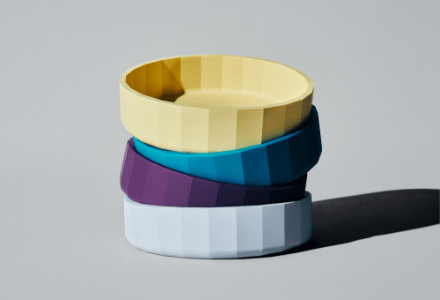Excellent properties of silicone rubber
Silicone rubber is used in many fields due to its excellent properties.

Heat-resistant
Compared to organic rubber, silicone rubber shows almost no change in properties even when heated to 150°C. (semi-permanent)
Surprisingly, it can withstand over 10,000 hours of continuous use even in heat of 200 degrees Celsius. (250°C can be used for a short time)

Cold resistance
In the case of general organic rubber, it becomes hard like glass at -20°C to -30°C and breaks when subjected to impact, but silicone rubber maintains its elasticity even under such conditions. This characteristic can be used to manufacture products such as cold-resistant containers.

Weatherability
Silicone rubber has excellent weather resistance. Ozone generated by corona discharge rapidly degrades general organic rubber, but silicone rubber is almost unaffected. In addition, even if it is exposed to ultraviolet rays or wind and rain for a long time, its physical properties hardly change.

Flame retardance
Silicone rubber is said to be difficult to burn even when brought close to a flame, but by adding a small amount of flame retardant, flame resistance and self-extinguishing properties can be imparted. Furthermore, since it does not contain organic halogen compounds, it produces almost no black smoke or toxic gas when ignited, making it an essential safety material for use in closed spaces such as airplanes and subways, as well as inside buildings.

chemical resistance
Silicone rubber has excellent oil resistance, solvent resistance, and chemical resistance. Under high temperature conditions, it exhibits oil resistance superior to that of nitrile rubber and chloroprene rubber, which have particularly good oil resistance. stays between 10% and 15%.

Electrical properties
Silicone rubber has excellent electrical insulation properties of 1 to 100 TΩ·m, and exhibits stable characteristics over a wide temperature range and frequency range. In addition, even when immersed in water, there is almost no deterioration in performance, making it ideal as an insulating material. In particular, it exhibits excellent resistance to corona discharge and arcs at high voltages, and is widely used as an insulating material for areas where high voltage is applied.
In addition, it has many other properties such as physiological inertness, thermal conductivity, water resistance, steam resistance, and radiation resistance.







